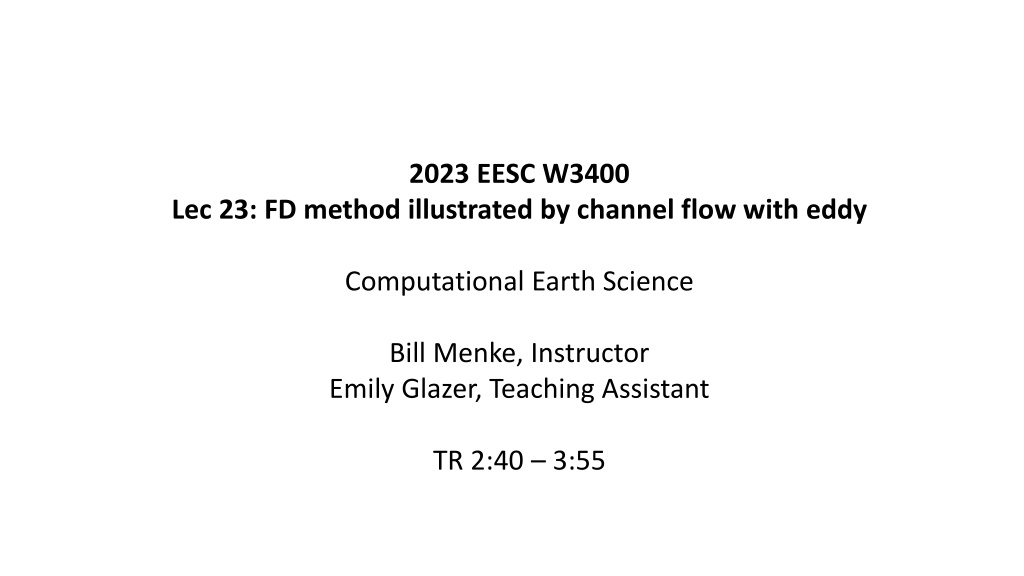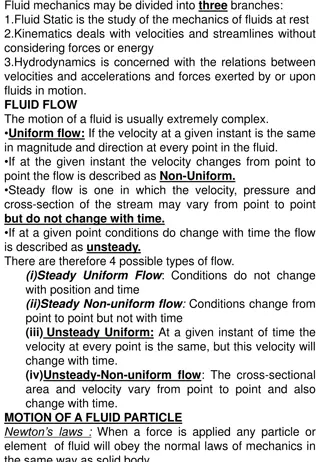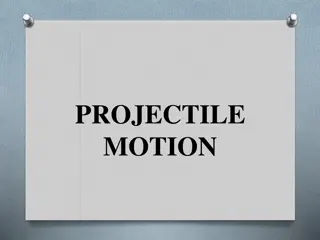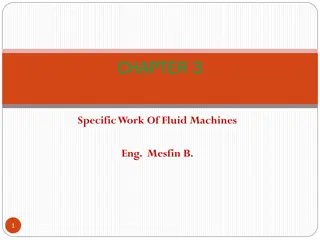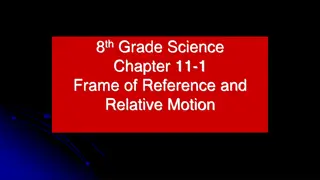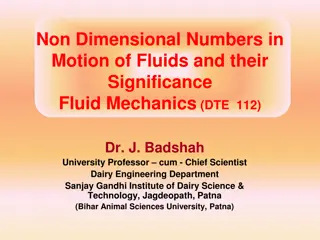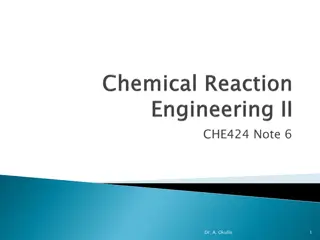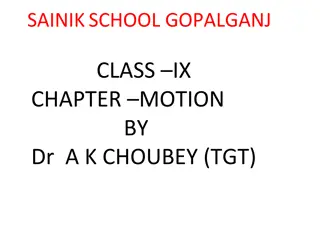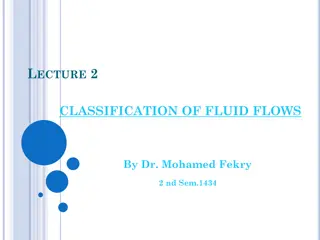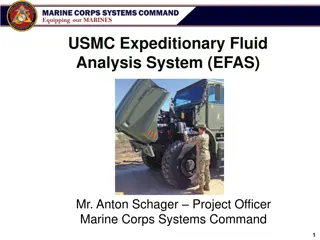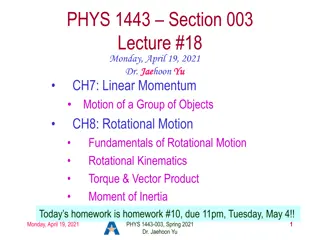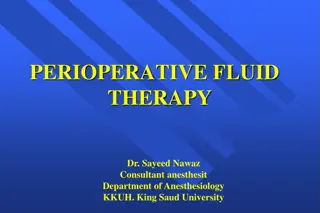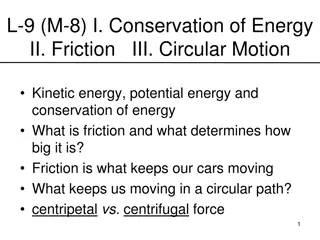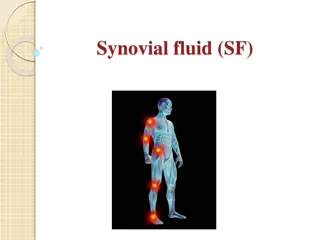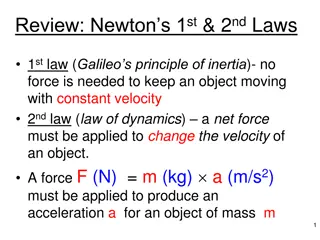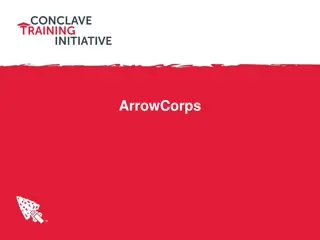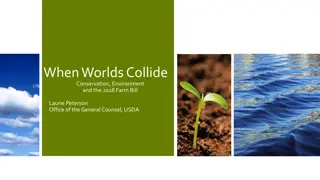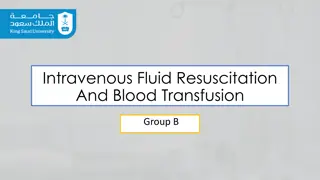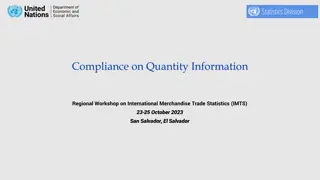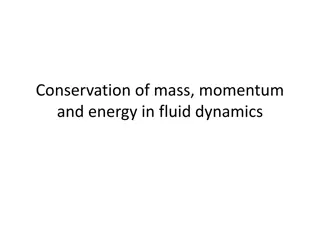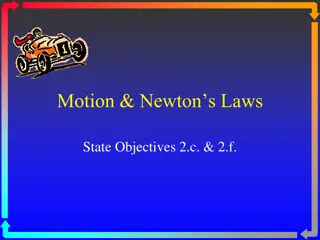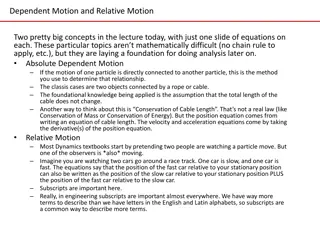Understanding Conservation of a Quantity in Fluid Motion
Today's lecture in Computational Earth Science delved into the Navier-Stokes Equation and the conservation of momentum in moving fluids. The discussion focused on the tricks involved in solving for pressure, dealing with repeating boundaries, and tracking eddies in channel flow. Through detailed illustrations and equations, the concept of conservation of a quantity in the presence of fluid motion was explained, emphasizing the increase in the quantity over time due to net flux into a volume and production within that volume.
Download Presentation

Please find below an Image/Link to download the presentation.
The content on the website is provided AS IS for your information and personal use only. It may not be sold, licensed, or shared on other websites without obtaining consent from the author. Download presentation by click this link. If you encounter any issues during the download, it is possible that the publisher has removed the file from their server.
E N D
Presentation Transcript
2023 EESC W3400 Lec 23: FD method illustrated by channel flow with eddy Computational Earth Science Bill Menke, Instructor Emily Glazer, Teaching Assistant TR 2:40 3:55
Today the Navier Stokes Equation trick of solving for pressure trick of repeating boundaries trick of particle tracking eddy in a channel
Part 1 the Navier Stokes Equation (equation for conservation of momentum in a moving fluid)
Conservation of a quantity ? in the presence of fluid motion increase in ? with time = net flux of ? into volume + production of ? in volume
Conservation of a quantity ? in the presence of fluid motion ? per unit volume ? per unit volume per unit time ??? ??? + ? ? and ? flux out flux in ? per unit area per unit time ? per unit area per unit time ? increase in ? with time = net flux of ? into volume + production of ? in volume
Conservation of a quantity ? in the presence of fluid motion ? per unit volume ? per unit volume per unit time ??? ??? + ? ? and ? flux out flux in ? per unit area per unit time ? per unit area per unit time ?C ?? ??= ??? ??+ ?
now suppose that ? is being transported by fluid motion the flux of ? is the concentration of ? times the fluid velocity ?? ?? ??= ??? ??= ??? ??+ ?
now suppose that ? is being transported by fluid motion the flux of ? is the concentration of ? times the fluid velocity ?? ?? ??= ??? ??= ??? ??+ ? ?? ??= ? ??? + ? ??
now suppose that ? is being transported by fluid motion the flux of ? is the concentration of ? times the fluid velocity ?? ?? ??= ??? ??= ??? ??+ ? ?? ??= ? ??? + ? ?? ?? ??= ???? ?? ??+ ? ?? ??
now suppose that ? is being transported by fluid motion the flux of ? is the concentration of ? times the fluid velocity ?? ?? ??= ??? ??= ??? ??+ ? ?? ??= ? ??? + ? ?? ?? ??= ???? ?? ??+ ? ?? ?? ?? ??+ ?? ?? ??= ???? ??+ ?
now suppose that ? is being transported by fluid motion the flux of ? is the concentration of ? times the fluid velocity ?? ?? ??= ??? ??= ??? ??+ ? ?? ??= ? ??? + ? ?? ?? ??= ???? ?? ??+ ? ?? ?? small if the fluid is incompressible ?? ?? ?? ?? ??= ???? ??+ ?
?? ?? ?? ?? ??= ? now suppose that ? is concentration ? of ???? of in ocean water with ? unknown source like waste dumping ?? ?? ?? ?? ??= ? might not be too hard to solve if we know ?? could use the finite difference method
?? ?? ?? ?? ??= ? forces like contact forces and gravity now suppose that ? is momentum of the ocean water itself ? = ??= ??? velocity ?? is the unknown constant ? since fluid is incompressible ???? ??+ ??? ??? ??= ??
?? ?? ?? ?? ??= ? now suppose that ? is momentum of the ocean water itself ? = ??= ??? velocity ?? is the unknown constant ? since fluid is incompressible ???? ?? ??? ??? ??= ?? non-linear in ?? extremely difficult to solve
forces in a moving fluid gravity ??= 0 ??= ??
forces in a moving fluid pressure low ? high ? ??= ?? ??
forces in a moving fluid contact forces shearing fluid ? shearing fluid low ?? ? high ??
forces in a moving fluid contact forces viscosity ??= ???? ?? ? ? stationary stationary low ?? drag force ??= ???? ?? ? ? high ??
forces in a moving fluid contact forces ??? net force??? ?? ??? + ?
forces in a moving fluid contact forces ??? ??? ?? net force ? ?? ???? ?? ??? + ? ??2?? ??2
so the x-component only equation is ??+ ??2?? ???? ?? ??? ??? ??= ?? ?? ??2 when ??? ?? is small (incompressible)
so the x-component only equation is ??+ ??2?? ???? ?? ??? ??? ??= ?? ?? ??2 when ??? ?? is small (incompressible) and the full Navier Stokes equation is ??? ?? ? ? ? = ?? ? + ? 2? when ? = 0 (incompressible)
and the full Navier Stokes equation is change in momentum with time advection in momentum pressure contact force viscous contact forces gravity ??? ?? ? ? ? = ? ? + ? 2? when ? = 0 (incompressible)
Navier Stokes equation for an incompressible viscous fluid ??? ?? ? ? ? = ?? ? + ? 2? 3 equations 4 equations 1 equation ? = 0 ??,??,??,? 4 unknowns same number of equations as unknowns, so solving equation may be possible
Part 2 trick to find pressure
mathematical trick to find the pressure field at time ? = 0, start with a velocity field that satisfies ? = 0 at each subsequent time step, adjust the pressure ? so that the new velocity satisfies satisfies ? = 0, too
Navier Stokes equation for an incompressible viscous fluid ??? ??= ?? ? + ? 2? + ? ? ? take ?? ? ?? = 0 = ?? 2? + ? 2? + ? ? ? at each time step, solve Poisson equation for pressure 2? = ??+ ? 2? + ? ? ?
Step 1: use velocities at current time to calculate pressure solve Poisson Equation 2? = ??+ ? 2? + ? ? ? Step 2: use Navier Stokes Equation to time step velocities one ? into the future ? ? + ? = ? ? +?? ?? ? with ?? ??=1 ??? ? + ? 2? + ? ? ? Step 3: go to step 1
Monitor ? to check it doesn t grow
Part 3 trick of repeating boundary conditions
Finite Difference grid ? ?? 1 0 ? 0 ? ?? 1 ?
Finite Difference grid ? ?? 1 0 ? 0 ? ?? 1 ? require to be the same
Finite Difference grid ? ?? 1 0 ? 0 ? ?? 1 like you turned it into a cylinder ? require to be the same
Part 4 trick of tracer particle tracking
? velocity field 4 0 ? 4 0
? tracer particles at ? = ? table of tracer particles 4 # x y 1 1 1 7 8 9 2 2 1 4 5 6 ... 1 2 3 0 ? 4 0
? 4 advance along velocity vector ?? ??? ? ?? ???+ ?= ?? ???+ 7 8 9 4 5 6 1 2 3 0 ? 4 0
? 4 advance along velocity vector 7 8 9 4 5 6 1 2 3 0 ? 4 0
? tracer particles at ? = ? table of tracer particles 4 # x y 1 1.4 1.1 7 9 9 8 2 2.5 1.0 4 5 6 ... 1 2 3 0 ? 4 0 repeat for each time step
Part 5 eddy in a shearing channel
background solution is shear flow in channel ??= ?0 ? ?? ?? ??= ?0?/?? ??= 0 ? ? = 0 ?? ?0 0 ? ??= 0
??= ?0 ??= ?0?/?? ??= 0 ? ? = 0 ? ??= 0 satisfies equation ??+ ??2?? 0 ???? ?? ??? 0 ??? ??= ?? ?? 0 0 ??2 0 equation satisfied because every term is zero
initial eddy ? ? satisfies because no flow into box ? = 0
The eddy rotation is in the same sense of the background shear flow ? ? so will the eddy grow with time?
